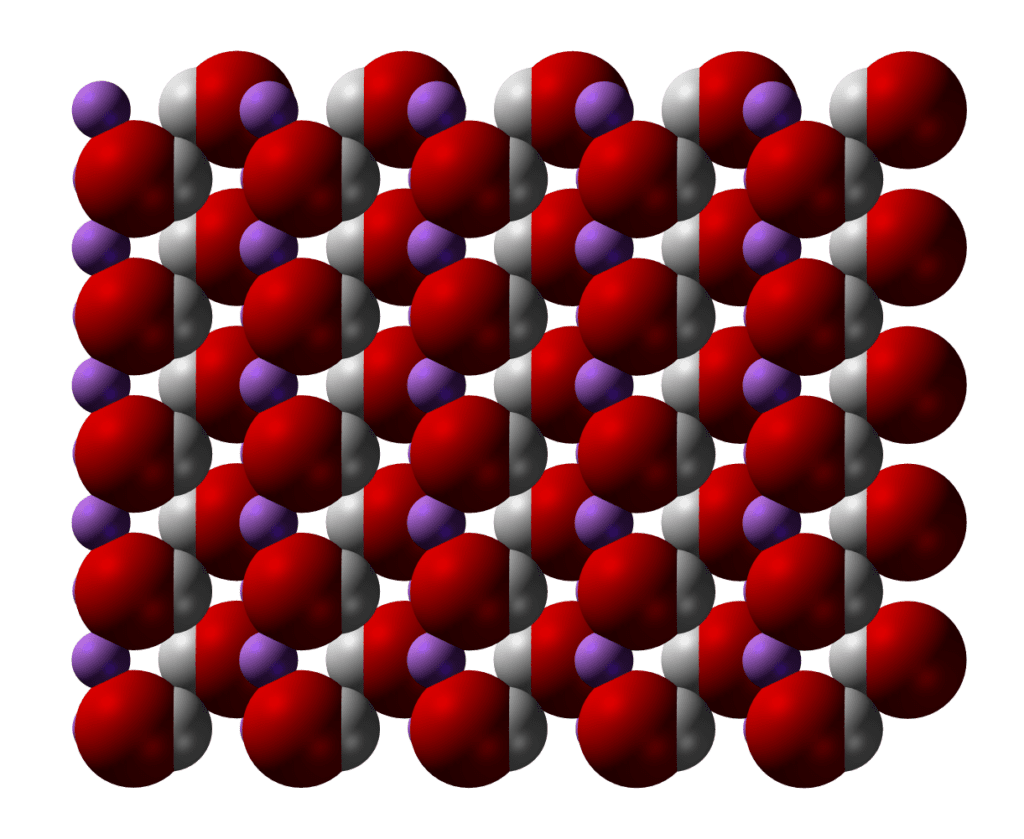Author: Jose Francisco Velasco Davis and Arman Bonakdarpour
If you’ve made it to our blog, you probably know more than most people about lithium metal. You know that electrifying everything will require a lot of lithium. Perhaps you know that lithium exists in numerous compounds, some of which are more efficient for production of the lithium-ion batteries (LIB) than others. You may have even heard that most of the global lithium precursors are – at present – refined in China. One battery-grade lithium compound, however, stands out as a precursor material for cathodes. We are talking about lithium hydroxide, and it will enable us to meet our clean energy mandates faster if its current supply chain challenges can be resolved and its production is prioritized.
What is so special about lithium anyways?
Chemical properties of lithium make it an exceptional element for battery applications. If we search for lithium metal in the periodic table of elements, we will find it listed as the third “lightest” element and the “lightest” of all the metals in the entire table. This basically means that we get more electric charge per unit mass of lithium than any other metal. Using battery jargon, we would say lithium has a very high specific (or volumetric) capacity or a very high ability to store electric charge. When this charge is released, an electric current is produced, but that is only half of the story. We would also like to have a high voltage battery. Now, when one of the two electrodes in a battery consists of lithium, we can obtain high voltages, because the lithium metal has the highest tendency among all elements to lose it electrons and create an electric current. This ease of losing electrons leads to formation of a high voltage. Stored electric energy in a battery is a product of the battery’s capacity and voltage, so increasing any of these two (or even better increasing them both) leads to a high energy battery. Now, what are the two electrodes of LIBs generally made of? The positive electrode of an LIB uses a synthetic compound of lithium (e.g., LiNiMnCoO2) and the negative electrode uses graphite which is essentially graphitic carbon. When we charge the battery, lithium ions go to the graphite and makes LiC6 and upon discharge they would leave this lithiated graphite to make graphite and LiNiMnCoO2.
This process can be repeated many times, and that’s what makes these LIBs very effective rechargeable batteries. Materials like these have led to highest energy and power density batteries and are now shaping a rechargeable world. By the way, we don’t use pure lithium in the LIBs, because it is not sufficiently safe during cycling. To learn more about construction and operation of these amazing LIBs, check this awesome video by Lesics.
What is the role of the lithium hydroxide and lithium carbonate, and which one is better for our battery-powered future?
The cathode materials commonly used in LIBs (e.g., LiFePO4 called LFP, or LiNiMnCoO2 – called NMC) are produced from lithium salt and other metal salt precursors using chemical processes. The lower energy density materials (or LFP) typically use lithium carbonate (Li2CO3) as one of their precursor chemicals. NMC materials, on the other hand, have higher energy density and are the preferred materials in many sectors such as the automotive industry. The lithium precursor for these materials is generally lithium hydroxide (LiOH). For this reason, demand for lithium hydroxide is now rapidly growing worldwide. In summary, efficient, low cost, and sustainable supplies of lithium hydroxide ensure cost effective and improved batteries for a global market.
So why is lithium carbonate still in demand?
Although basic science of favours lithium hydroxide for the synthesis of LIB cathode material, the production and demand for lithium carbonate remains prevalent, due mostly in part to the origins of both compounds. Lithium is extracted from two primary sources: brine which contains dissolved lithium chloride and is pumped from underground reservoirs (e.g., in Chile) and from lithium-containing spodumene minerals, like in hard rock formations (e.g., in Australia). The source of lithium has traditionally dictated the refined form of lithium salt. Using current refining methods, brines (containing lithium chloride) have yielded lithium carbonate, whereas refinement from spodumene (lithium sulfate) can yield either lithium hydroxide or lithium carbonate. Using incumbent technologies, lithium carbonate can be further processed into lithium hydroxide, but this process includes added costs. Lithium carbonate has other important applications, for example, the manufacturing of glazes, ceramics, tiles, greases, and critically, as a medication to treat bipolar disorder.
The bottom line is that in many cases, such as brine-sourced lithium, lithium carbonate is cheaper to refine than lithium hydroxide, as it requires one less step. The higher cost of producing lithium hydroxide using current technologies along with the non-battery market keep lithium carbonate in high demand despite the benefits of lithium hydroxide in producing better batteries.
A more cost-effective way to refine lithium hydroxide
Mangrove’s technology eliminates the lithium carbonate production all together can co-locate in the vicinity of lithium extractors and mines, disrupting the current wave of shipping to China for refinement purposes. Mangrove’s proprietary electrochemical technology allows for on-site and direct refinement of lithium chloride from brine sources into a high purity, battery-grade lithium hydroxide – without requiring the lithium carbonate intermediate. Our technology uses much less energy and fewer chemical inputs than the current refinement methods widely in use.

All the above-mentioned benefits decrease the overall OPEX/CAPEX for lithium producers and allow mines to come online and reach profitability in a much shorter period. Mangrove’s approach is imperative to meet the global demand for lithium hydroxide and will accelerate the electrification and adoption of renewable energy across the planet. The status quo won’t cut it.
To learn more about Mangrove Lithium’s refinement of a wide variety of feedstocks to lithium hydroxide please visit https://www.mangrovelithium.com/how-it-works/




